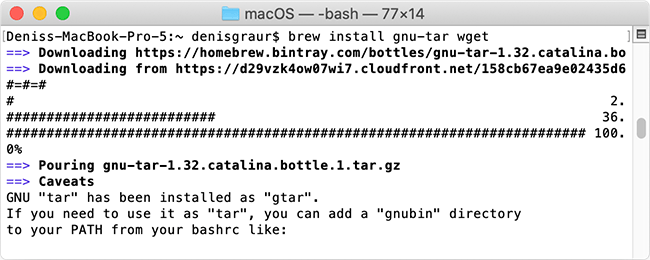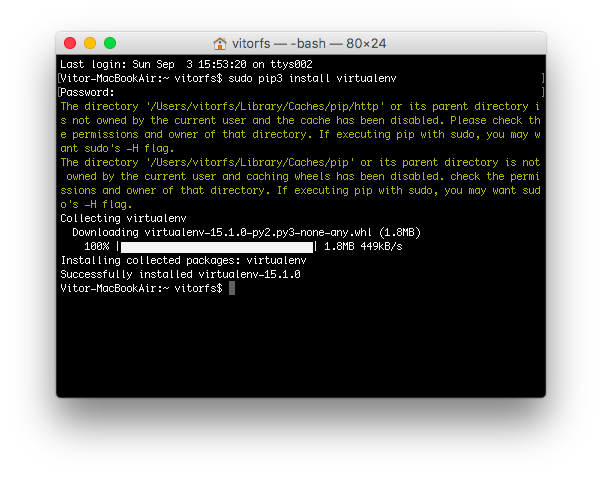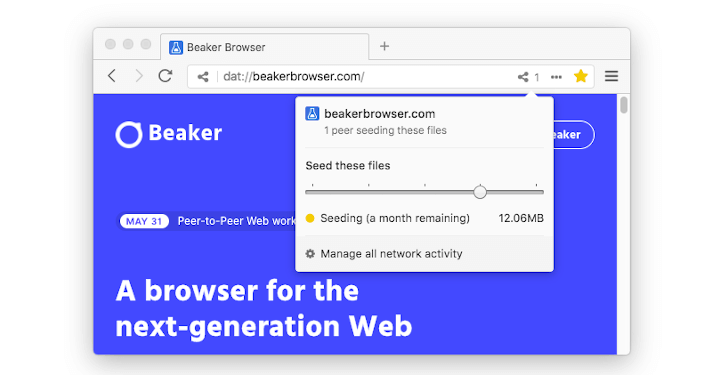- Install Wget Mac Homebrew App
- Install Wget Mac Homebrew Software
- Install Wget Mac Without Brew
- Install Wget Mac Homebrew Free
Sudo apt update sudo apt -y install make build-essential libssl-dev zlib1g-dev libbz2-dev libreadline-dev libsqlite3-dev wget curl llvm libncurses5-dev xz-utils tk-dev libxml2-dev libxmlsec1-dev libffi-dev liblzma-dev libgdbm-dev uuid-dev python3-openssl git openjdk-11-jre-headless CXX=/usr/bin/g. Homebrew is the most popular package manager for Mac OS X. Homebrew Cask extends Homebrew with support for quickly installing Mac applications like Google Chrome, VLC, and more. No more dragging and dropping applications! This is an easy way to install Mac terminal utilities and graphical apps.
Warning
For safety reasons, DO NOT install Red with a root user. If you are unsure how to createa new user on Linux, see this guide by DigitalOcean.
Installing the pre-requirements¶
Please install the pre-requirements using the commands listed for your operating system.
Python 3.8.1 or greater; Python 3.9 is currently not supported!
Pip 18.1 or greater
Git 2.11+
Java Runtime Environment 11 (for audio support)
We also recommend installing some basic compiler tools, in case our dependencies don’t providepre-built “wheels” for your architecture.
Operating systems¶
Continue by Creating a Virtual Environment.
In order to install Git 2.11 or greater, we recommend adding the IUS repository:
Complete the rest of the installation by installing Python 3.8 with pyenv.
Complete the rest of the installation by installing Python 3.8 with pyenv.
We recommend installing pyenv as a method of installing non-native versions of python onDebian/Raspbian Buster. This guide will tell you how. First, run the following commands:
Complete the rest of the installation by installing Python 3.8 with pyenv.
Fedora Linux 31 and above has all required packages available in official repositories. Installthem with dnf:
Continue by Creating a Virtual Environment.
Install Brew: in Finder or Spotlight, search for and open Terminal. In the terminal, paste thefollowing, then press Enter:
After the installation, install the required packages by pasting the commands and pressing enter,one-by-one:
Continue by Creating a Virtual Environment.
We recommend installing a community package to get Python 3.8 on openSUSE Leap 15.1+. This package willbe installed to the /opt directory.
First, add the Opt-Python community repository:
Now install the pre-requirements with zypper:
Since Python is now installed to /opt/python, we should add it to PATH. You can add a file in/etc/profile.d/ to do this:
Now, install pip with easy_install:
Continue by Creating a Virtual Environment.
openSUSE Tumbleweed has all required dependencies available in official repositories. Install themwith zypper:
Continue by Creating a Virtual Environment.
We recommend adding the git-core ppa to install Git 2.11 or greater:
We recommend adding the deadsnakes ppa to install Python 3.8.1 or greater:
Now install the pre-requirements with apt:
Continue by Creating a Virtual Environment.
We recommend adding the git-core ppa to install Git 2.11 or greater:
Now install the pre-requirements with apt:
Continue by Creating a Virtual Environment.
We recommend adding the git-core ppa to install Git 2.11 or greater:
Now, to install non-native version of python on non-LTS versions of Ubuntu, we recommendinstalling pyenv. To do this, first run the following commands:
And then complete the rest of the installation by installing Python 3.8 with pyenv.
Installing Python with pyenv¶
Note
If you followed one of the sections above, and weren’t linked here afterwards, you should skipthis section.
On distributions where Python 3.8 needs to be compiled from source, we recommend the use of pyenv.This simplifies the compilation process and has the added bonus of simplifying setting up Red in avirtual environment.
After this command, you may see a warning about ‘pyenv’ not being in the load path. Follow theinstructions given to fix that, then close and reopen your shell.
Then run the following command:

This may take a long time to complete, depending on your hardware. For some machines (such asRaspberry Pis and micro-tier VPSes), it may take over an hour; in this case, you may wish to removethe CONFIGURE_OPTS=--enable-optimizations part from the front of the command, which willdrastically reduce the install time. However, be aware that this will make Python run about 10%slower.
After that is finished, run:
Pyenv is now installed and your system should be configured to run Python 3.8.
Continue by Creating a Virtual Environment.
Creating a Virtual Environment¶
Tip
If you want to learn more about virtual environments, see page: About Virtual Environments
We require installing Red into a virtual environment. Don’t be scared, it’s verystraightforward.
You have 2 options:
Using venv (quick and easy, involves just two commands)
Using pyenv virtualenv (only available and recommended when you installed Python with pyenv)
Using venv¶

This is the quickest way to get your virtual environment up and running, as venv is shipped withpython.
First, choose a directory where you would like to create your virtual environment. It’s a good ideato keep it in a location which is easy to type out the path to. From now, we’ll call itredenv and it will be located in your home directory.
Create your virtual environment with the following command:
And activate it with the following command:
Important
You must activate the virtual environment with the above command every time you open a newshell to run, install or update Red.
Continue by Installing Red.
Using pyenvvirtualenv¶
Using pyenvvirtualenv saves you the headache of remembering where you installed your virtualenvironments. This option is only available if you installed Python with pyenv.
First, ensure your pyenv interpreter is set to python 3.8.1 or greater with the following command:
Now, create a virtual environment with the following command:
Replace <name> with whatever you like. If you ever forget what you named it,you can always use the command pyenvversions to list all virtual environments.
Now activate your virtualenv with the following command:
Important
You must activate the virtual environment with the above command every time you open a newshell to run, install or update Red. You can check out other commands like pyenvlocal andpyenvglobal if you wish to keep the virtualenv activated all the time.
Continue by Installing Red.
Installing Red¶
Choose one of the following commands to install Red.
To install without additional config backend support:
Or, to install with PostgreSQL support:
Note
These commands are also used for updating Red
Setting Up and Running Red¶
After installation, set up your instance with the following command:
This will set the location where data will be stored, as well as yourstorage backend and the name of the instance (which will be used forrunning the bot).
Once done setting up the instance, run the following command to run Red:
It will walk through the initial setup, asking for your token and a prefix.You can find out how to obtain a token withthis guide.
Tip
If it’s the first time you’re using Red, you should check our Getting started guidethat will walk you through all essential information on how to interact with Red.
SpatiaLite adds spatial support to SQLite, turning it into a full-featuredspatial database.
First, check if you can install SpatiaLite from system packages or binaries.
For example, on Debian-based distributions that package SpatiaLite 4.2+, try toinstall the libsqlite3-mod-spatialite package. For older releases installspatialite-bin.
Install Wget Mac Homebrew App
For macOS, follow the instructions below.
For Windows, you may find binaries on the Gaia-SINS home page.
In any case, you should always be able to install from source.
Installing from source¶
Mac last operating systems. GEOS and PROJ.4 should be installedprior to building SpatiaLite.
SQLite¶
Install Wget Mac Homebrew Software
Check first if SQLite is compiled with the R*Tree module. Run the sqlite3command line interface and enter the following query:
If you obtain an error, you will have to recompile SQLite from source. Otherwise,skip this section.

To install from sources, download the latest amalgamation source archive fromthe SQLite download page, and extract:
Next, run the configure script – however the CFLAGS environment variableneeds to be customized so that SQLite knows to build the R*Tree module:
Install Wget Mac Without Brew
SpatiaLite library (libspatialite)¶
Get the latest SpatiaLite library source bundle from thedownload page:
Note
For macOS users building from source, the SpatiaLite library and toolsneed to have their target configured:
macOS-specific instructions¶
To install the SpatiaLite library and tools, macOS users can choose betweenKyngChaos packages and Homebrew.
Install Wget Mac Homebrew Free
KyngChaos¶
First, follow the instructions in the KyngChaos packages section.
When creating a SpatiaLite database, the spatialite program is required.However, instead of attempting to compile the SpatiaLite tools from source,download the SpatiaLite Tools package for macOS, and install spatialitein a location available in your PATH. For example:

Finally, for GeoDjango to be able to find the KyngChaos SpatiaLite library,add the following to your settings.py:
Homebrew¶
Homebrew handles all the SpatiaLite related packages on your behalf,including SQLite, SpatiaLite, PROJ, and GEOS. Install them like this:
Finally, for GeoDjango to be able to find the SpatiaLite library, add thefollowing to your settings.py:

